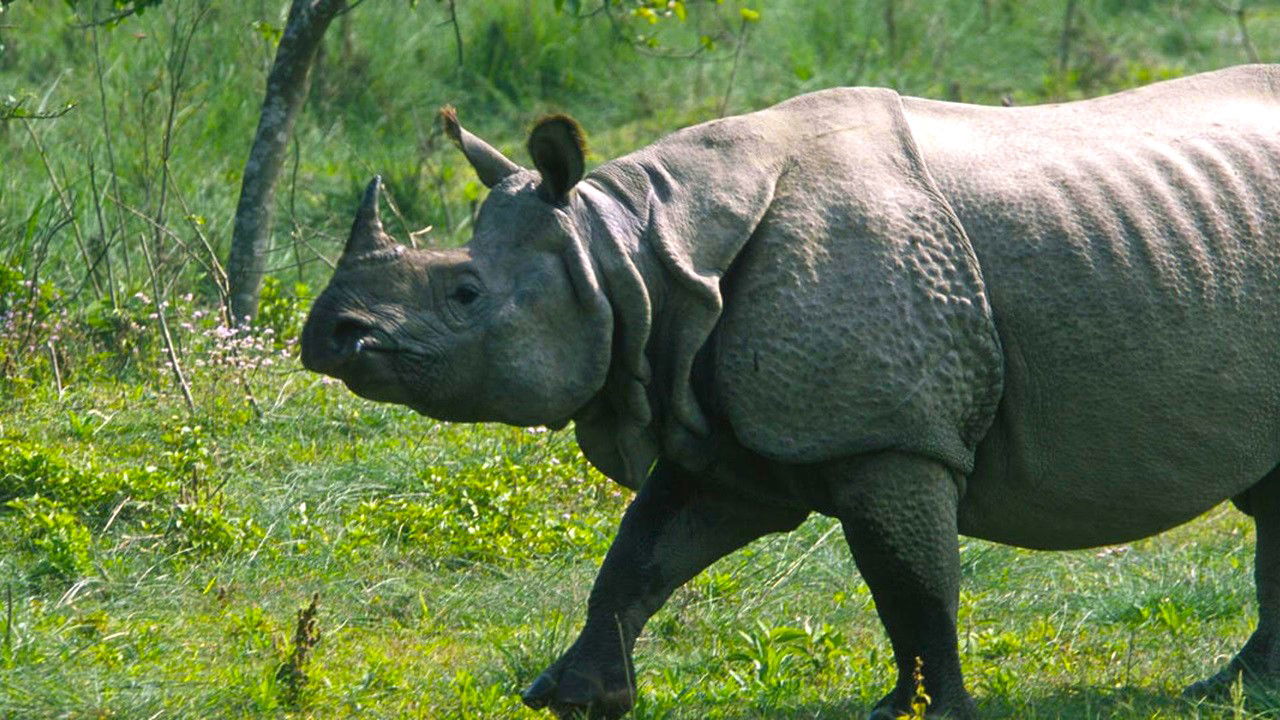
India's population of one-horned Asian rhinos has nearly tripled over the past four decades, highlighting the remarkable progress the country has made in wildlife conservation. On World Rhino Day, the Indian government released data showing that the rhino population has surged from just 1,500 in the 1980s to over 4,000 today. Once on the verge of extinction with only 600 individuals remaining in the 1960s, the one-horned rhino now stands as a result of the country’s successful conservation and anti-poaching efforts.
Kaziranga National Park in Assam, a UNESCO World Heritage site, plays a crucial role in this conservation success. Home to approximately 80% of the world’s greater one-horned rhinos, the park has witnessed a 170% increase in rhino numbers since the 1980s. The park’s diverse habitat, which includes grasslands, swamps, and riverine forests, offers an ideal environment for the species. Local communities, along with the Assam Forest Department, have been instrumental in protecting these vulnerable animals. Their anti-poaching efforts, coupled with government-backed initiatives, have significantly contributed to the rebound in rhino populations.
The greater one-horned rhino, also known as the Indian rhinoceros, is the largest of the three Asian rhino species. Distinguished by its thick, armor-like skin and a single horn, it can weigh up to 2,800 kilograms. Unlike its relatives, the two-horned Sumatran rhino and the single-horned Javan rhino, the Indian rhino has made a notable comeback, despite remaining vulnerable to threats such as poaching. The International Union for Conservation of Nature (IUCN) still classifies the species as "vulnerable," highlighting the need for continued protection.
While India’s conservation efforts have proven successful, rhino populations worldwide continue to face significant challenges. The global rhino population has plummeted from 500,000 in the early 20th century to around 28,000 today, according to the International Rhino Foundation. Rhino horns, highly coveted in traditional medicine markets in countries like China and Vietnam, fuel the poaching crisis that still threatens these majestic creatures.
In India, although poaching incidents have decreased due to stricter enforcement, illegal trade in rhino horns persists. Nonetheless, India’s one-horned rhino success story offers hope in the global effort to prevent rhino extinction. With over 70% of the global rhino population residing in India, particularly in Kaziranga, the country’s commitment to protecting this species serves as a model for wildlife conservation around the world.
Government efforts, strengthened by community involvement, will remain critical in ensuring the long-term survival of the greater one-horned rhinoceros.

















